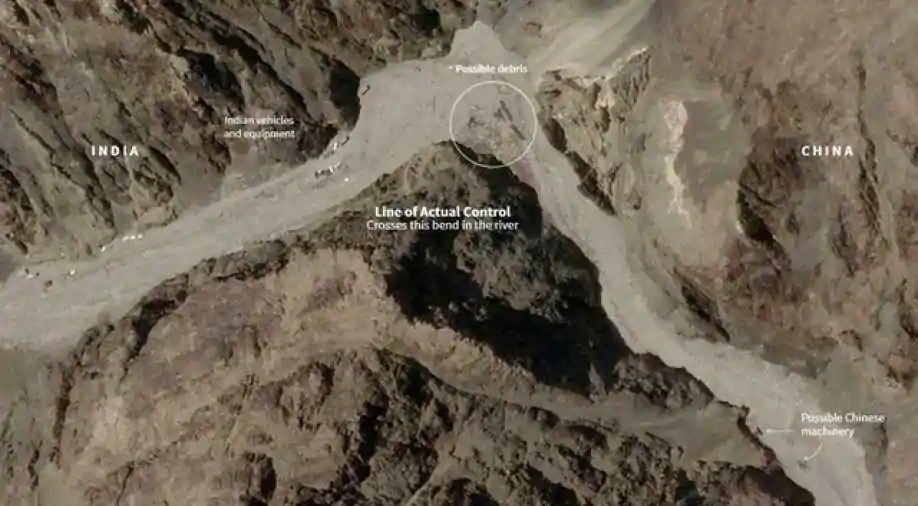 Picture Credits - wionews.com
Picture Credits - wionews.comGalwan Valley Issue
GALWAN VALLEY ISSUE
Since the 1980’s there have been issues among China and India at 20 distinctive border locations. In 2019, India reported more than 660 LAC infringement and 108 aerial violations by PLA.
Sino Indian Border Dispute
Sovereignty over two moderately huge and a few littler isolated bits of the region has been challenged between China and India. Aksai Chin is there either in the Indian association region of Ladakh or the Chinese self-ruling district of Xinjiang.
The other contested domain lies south of the McMahon Line. It was once alluded to the North-East Frontier Agency and is presently called Arunachal Pradesh. The McMahon Line was a piece of the 1914 Simla Convention between British India and Tibet, without the understanding of China.
1962 Sino-Indian War was fought in both of these regions. A consent to determine the debate was closed in 1996, including "certainty building measures" and a commonly concurred Line of Actual Control. W. H. Johnson, a government worker with the Survey of India proposed the "Johnson Line" in 1865, which had put Aksai Chin in Jammu and Kashmir.
Galwan Valley Skirmish
On 15 June, Indian and Chinese soldiers clashed for six hours in a lofty area of a precipitous District in the Galwan Valley. The conflict brought about the passing of 20 Indian troopers of the sixteenth Bihar Regiment including its CO, Colonel Santosh Babu. Some Indian troopers were additionally taken captive (Later released). According to Indian media sources, the mêlée brought about 43 Chinese losses.
Amid the deadlock, India chose to move an extra 12,000 workers roughly to the locale to help complete the Indian road venture.
Cause
Numerous aspects have played the role of trigger for these encounters. MIT educator Taylor Fravel said that this was a reaction from China in response to the improvement of the Indian framework in Ladakh, especially the Darbuk–Shyok–DBO Road. He included that it was a demonstration of solidarity of China during the COVID-19 pandemic which had harmed the Chinese economy and worldwide notoriety.
Jayadeva Ranade, President of the Center for China Analysis and Strategy and previously part of National Security Advisory Board reasons out that China's present hostility in the area is to ensure its benefits and tentative arrangements in Ladakh and connecting districts, for example, the China–Pakistan Economic Corridor.
These conflicts have likewise been connected to the Chinese system of Five Fingers of Tibet by Adhir Ranjan Chowdhury, The Five Fingers of Tibet is a Chinese procedure credited to Mao Zedong which beliefs Tibet to be China's right-hand palm, with five fingers on its outskirts: Ladakh, Nepal, Sikkim, Bhutan, and Arunachal Pradesh, and that China should "liberate" these areas.
Incidents
On 5 May, the main stalemate started as a conflict among Indian and Chinese warriors at the seashore of Pangong Tso, a lake shared by India and Tibet, China, with the Line of Actual Control (LAC) going through it.
As indicated by Indian media reports, on 10 May, an altercation started when the Chinese interfered into the Muguthang Valley and yelled at the Indian soldiers: "This isn't your territory. This isn't An Indian area ... along these lines, simply return." An Indian Lieutenant reacted by punching a Chinese major's nose. The occurrence grew into a fight and then 150 troopers got included with stones tossed at each other. Seven Chinese and four Indian soldiers were harmed.
On 21 May, the Indian Express revealed that Chinese soldiers had entered the Indian region in the Galwan River valley and protested the street development by India inside the (undisputed) Indian domain. The street under development is a part of the Darbuk–Shyok–DBO Road which leads into the Galwan valley.
Economic Response
Following the Galwan Valley conflict on 15 June 2020, there were calls all over India to blacklist the Chinese merchandise.
The Indian Railways dropped an agreement with a Chinese firm, while the Department of Telecommunication informed BSNL not to utilize any Chinese made item.
Mumbai dropped a monorail contract where the main bidders were Chinese organizations; and started concentrating on searching for an Indian innovative accomplice instead. However, various Indian government authorities said that fringe pressures would not affect the exchange between the two nations.



